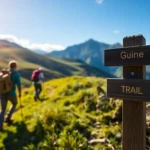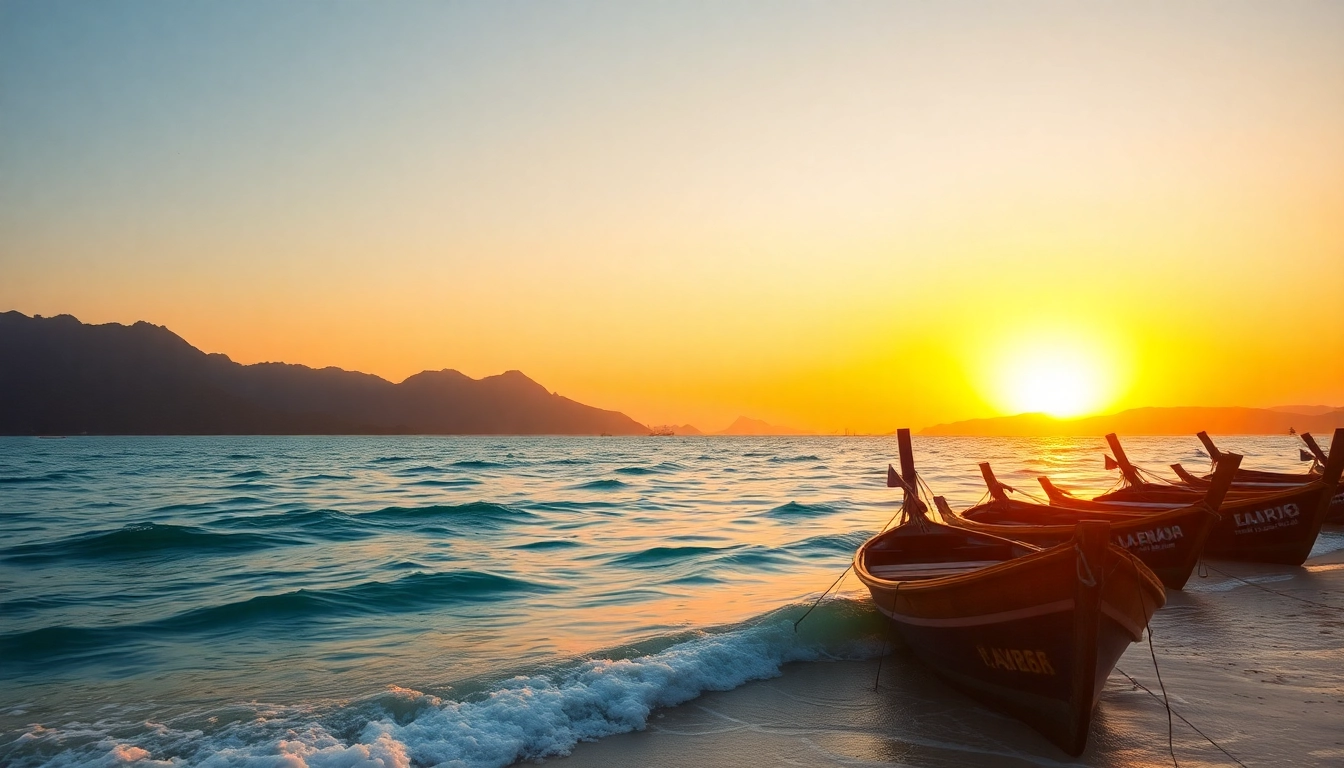Introduction to Lombok: Indonesia’s Untapped Travel Destination
Nestled within the Indonesian archipelago, Lombok remains one of Southeast Asia’s hidden gems, offering a compelling blend of natural beauty, cultural richness, and adventure opportunities. While Bali often dominates travel narratives, Lombok has quietly built a reputation as a pristine, less commercialized alternative that appeals to discerning travelers seeking authentic experiences and untouched landscapes. With its stunning beaches, towering volcanoes, vibrant local traditions, and diverse marine life, Lombok presents an expansive canvas for exploration and discovery. If you are looking to escape the crowds and immerse yourself in Indonesia’s cultural and natural heritage, then exploring Lombok should be at the top of your list. For comprehensive insights and travel planning resources, visit Lombok.
Geographic overview and cultural significance
Lombok is an island part of the West Nusa Tenggara province of Indonesia, situated east of Bali and separated by the Lombok Strait. Covering an area of approximately 4,738 square kilometers, the island boasts a diverse topography ranging from verdant rice terraces and lush forests to rugged volcanic mountains. Its geographic positioning lends itself to unique climatic conditions—warm tropical weather with a distinct dry season from May to September, ideal for outdoor pursuits and beach visits.
Beyond its physical features, Lombok holds deep cultural significance, rooted in its indigenous Sasak community. The Sasak culture, rich in traditional music, dance, crafts, and religious practices, offers travelers an authentic window into local life. The island’s cultural identity is strongly intertwined with Islamic traditions, reflected in its mosques, festivals, and daily routines. Despite rapid modernization, Lombok has managed to preserve its cultural roots, making it a compelling destination for cultural tourism.
Historical background and development
The history of Lombok is characterized by a blend of indigenous traditions and external influences. Evidence suggests that early inhabitants arrived thousands of years ago, developing agricultural techniques and forging maritime connections. Historically, Lombok was part of various kingdoms and sultanates, with evidence of trade relations spanning from the Indian Ocean to mainland Asia.
The island’s modern development accelerated in the 20th century through infrastructural improvements and government policies aimed at boosting tourism. The eruption of Mount Rinjani in the 19th century drastically shaped the island’s landscape and people’s livelihoods, fostering resilience and community cohesion. Today, the economic landscape is increasingly driven by tourism, agriculture, and local crafts, positioning Lombok as a strategic yet tranquil alternative to more commercialized islands.
Why Lombok stands out from Bali and other islands
While Bali is globally recognized for its vibrant nightlife and arts scene, Lombok offers a quieter, more nature-centric experience. Its rugged terrain, fewer crowds, and authentic local culture give it a distinctive charm. For adventure seekers, the island’s towering Mount Rinjani—Indonesia’s second-highest volcano—becomes a natural magnet, offering challenging treks with rewarding panoramic views.
Furthermore, Lombok’s beaches—such as Senggigi, Kuta Beach, and Tanjung Aan—are less crowded and boast pristine sands and crystal-clear waters, perfect for snorkeling, diving, or relaxing away from mass tourism. The Gili Islands nearby, with their vibrant marine ecosystems and laid-back atmospheres, complete the picture of a diverse, yet unspoiled, island paradise.
Natural attractions and serenity
Unlike some neighboring islands, Lombok retains an aura of unspoiled wilderness, with vast rice paddies, traditional villages, and untouched beaches. Its relative lack of commercialization allows visitors to enjoy authentic experiences, from organic farming to traditional weaving.
Cultural authenticity
The Sasak community maintains traditional custodianship over many parts of the island, offering cultural tours that showcase terraced rice fields, local crafts, and traditional performances. This cultural authenticity sets Lombok apart from more tourist-centric destinations.
Must-Visit Places and Natural Wonders in Lombok
Iconic beaches and coastal hotspots
Lombok’s coastlines are famed for their stunning beaches that combine natural beauty with excellent surf spots. Senggigi Beach, on the island’s west coast, offers a vibrant nightlife scene alongside calm waters for swimming and water sports. Tanjung Aan is renowned for its white sands and excellent surf, attracting both locals and tourists.
Selong Belanak Beach is increasingly popular owing to its gentle waves, making it an ideal spot for beginner surfers. Other notable beaches include Mawun, which is less developed and offers tranquil surroundings for sunbathing and picnics. These beaches exemplify Lombok’s promise of pristine beauty with fewer crowds than Bali.
Mount Rinjani: Trekking and adventure activities
Standing at 3,726 meters, Mount Rinjani is an active volcano that defines Lombok’s geography and adventurous appeal. Trekking Rinjani is considered one of Southeast Asia’s most rewarding multi-day hikes, attracting seasoned hikers and casual adventurers alike. The trek typically spans 2–4 days, traversing lush forests, hot springs, and the caldera’s edge, culminating in breathtaking sunrise views from the summit.
Beyond hiking, the region around Rinjani offers hot springs, waterfalls, and wildlife encounters. Local guides and tour operators provide tailored packages, ensuring safety and an enriching experience for trekkers of various skill levels.
Unique islands and marine parks like the Gili Islands
The Gili Islands—Gili Trawangan, Gili Air, and Gili Meno—are a short boat ride away from Lombok’s coast and are world-famous for their crystal-clear waters and vibrant coral reefs. Gili Trawangan offers lively nightlife, bars, and water sports, while Gili Meno remains more secluded and tranquil. Gili Air provides a balanced experience, blending relaxation with activity.
These islands are prime spots for snorkeling, diving, and turtle watching. The marine biodiversity here is impressive, with healthy coral reefs supporting a variety of marine life, making it a must-visit for underwater enthusiasts.
Experiencing Lombok’s Rich Culture and Traditions
Local crafts, dances, and festivals
Lombok’s cultural fabric is vibrant, rooted in centuries-old traditions. The Sasak people are renowned for their woven textiles—especially Songket—that showcase intricate patterns and bold colors. Visitors can participate in weaving workshops or shop at local markets for unique souvenirs.
The island’s traditional dance performances, such as the Gendang Beleq—a lively drum and dance ritual—are vivid displays of local spirituality and community bonding. Festivals like Bau Nyale, which celebrates the sea worms believed to be the reincarnation of princesses, attract tourists and locals alike, offering insight into the island’s mythology and customs.
Traditional villages and cultural tours
Several villages, such as Sade and Sukarara, serve as living museums of Sasak culture. Tourists can observe traditional housing architecture, participate in craft making, and engage with locals to gain an authentic understanding of daily life. These cultural tours foster appreciation and help preserve indigenous traditions amidst modern tourism development.
Authentic culinary delights of Lombok
Lombok’s cuisine reflects its diverse cultural influences. Signature dishes such as Ayam Taliwang—a spicy grilled chicken—offer bold flavors featuring chili, garlic, and lime. Sate Rembiga (spiced skewered meat), Plecing Kangkung (water spinach with chili-lime sauce), and fresh seafood are staples enjoyed across the island.
Food markets and local warungs provide an authentic tasting experience, enabling visitors to enjoy Lombok’s culinary richness in a casual, immersive setting.
Practical Travel Tips for Visiting Lombok
Best time to visit and seasonal considerations
The ideal visit window spans from May to September during the dry season, when the weather is sunny and suitable for outdoor activities, especially trekking and beach lounging. The wet season, from November to March, can bring heavy rains and rough seas, although some travelers appreciate the lush landscape and fewer visitors during these months.
During peak season, accommodation and transportation should be booked well in advance to secure better deals and availability.
Transportation options and navigation tips
Getting around Lombok involves a combination of travel modes, including rental scooters, private drivers, and public transportation like bemos (shared minivans). Renting a scooter is popular among independent travelers but requires cautious driving due to challenging road conditions and local traffic rules.
For longer distances, domestic flights from Lombok International Airport to Jakarta, Bali, or other major hubs are available, facilitating seamless travel within Indonesia. Tour operators often include transfers and guided tours, making logistics easier for visitors unfamiliar with the area.
Accommodation recommendations and travel packages
Lombok offers diverse lodging options—from luxury resorts and boutique hotels to budget hostels and homestays. Regions such as Senggigi and Kuta cater to different traveler preferences. Many resorts feature private beaches, spas, and culinary experiences, ensuring a restful stay.
Package deals often include guided tours, treks, and island-hopping expeditions, providing value and convenience. It’s advisable to choose accommodations with good reviews and eco-friendly credentials to support sustainable tourism efforts.
Planning Your Lombok Adventure: Itinerary Ideas & Local Insights
Sample 5-7 day itineraries for different interests
- Nature & Adventure Enthusiasts: Day 1: Arrival and relax at Senggigi Beach; Day 2: Trek Mount Rinjani; Day 3: Explore hot springs and waterfalls; Day 4: Island hop to Gili Trawangan; Day 5: Snorkeling and marine exploration; Day 6: Cultural tour to Sasak villages; Day 7: Departure.
- Cultural & Relaxation Seekers: Day 1: Arrive and settle in Kuta; Day 2: Visit local markets and traditional villages; Day 3: Cooking classes and craft shopping; Day 4: Beach time at Tanjung Aan; Day 5: Spa and wellness experience; Day 6: Attend cultural festivals if available; Day 7: Departure.
Top tour operators and travel agencies
Reputable operators such as Lombok Tours, Rinjani Trekking, and Lombok Paradise Tours offer curated packages, eco-friendly options, and personalized itineraries. They prioritize safety, sustainability, and authentic experiences, providing expert guides and comprehensive support.
Safety tips and sustainable tourism practices
Travelers should adhere to local safety advisories, especially during treks, and respect local customs. Using eco-friendly products, reducing plastic waste, and supporting community-based tourism initiatives help preserve Lombok’s environment and cultural heritage, ensuring a sustainable future for all visitors.









